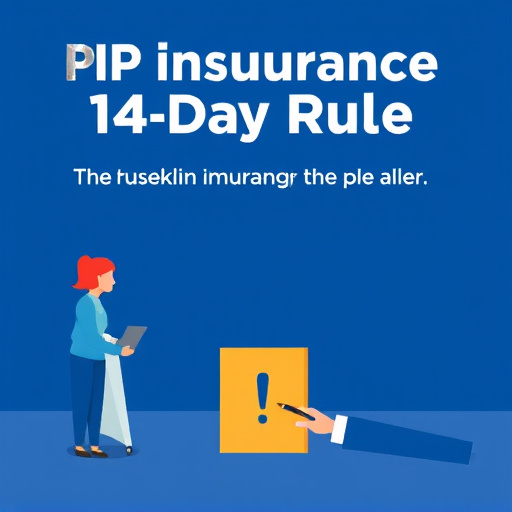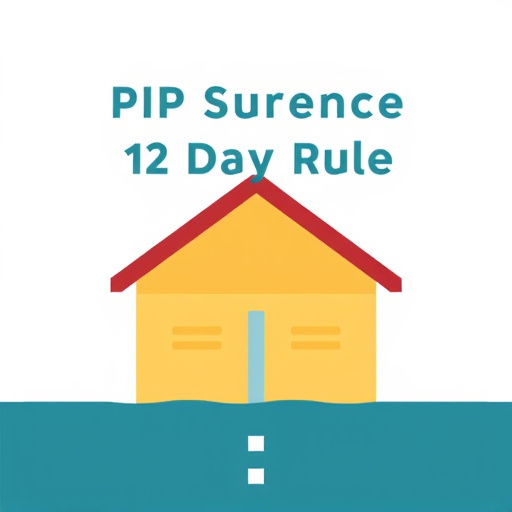On-the-job injuries significantly impact employees and productivity. Prompt documentation is crucial through detailed incident records, medical evaluations, and supporting information for PIP (Personal Injury Protection) insurance claims within the 14-day rule. This rule requires employees to notify employers within 14 days of injury, ensuring prompt medical attention, preserving evidence, and protecting rights. Effective early documentation ensures a seamless recovery transition and protects financial stability through the mandatory 14-day reporting period for PIP benefits. Adherence to these processes fosters a culture of safety, reduces injuries, and empowers both employees and employers.
On-the-job injuries are a significant concern for employees and employers alike, impacting not just individual well-being but also organizational productivity. This article delves into comprehensive strategies for managing such injuries, focusing on the crucial role of PIP (Personal Injury Protection) insurance and the 14-day rule for claim filing. By understanding these aspects, employees can navigate the claims process effectively, while employers can implement preventative measures through training to reduce workplace hazards.
- Understanding On-the-Job Injuries and Their Impact
- The Role of PIP Insurance in Employee Compensation
- Unveiling the 14-Day Rule: Timeframe for Claim Filing
- Documenting the Injury: Essential Steps for Employees
- Navigating the Claims Process: Rights and Responsibilities
- Preventive Measures: Reducing On-the-Job Injuries Through Training
Understanding On-the-Job Injuries and Their Impact

On-the-job injuries are a common occurrence in various industries, ranging from physical labour to office work. These injuries can have significant impacts on employees’ lives and productivity. When an employee sustains an injury while performing their job duties, it’s essential to understand the immediate steps for proper documentation and treatment. The PIP (Personal Injury Protection) insurance 14-day rule is a critical aspect of this process.
According to this rule, employees have 14 days to notify their employers about on-the-job injuries. Prompt reporting ensures that the necessary medical attention can be provided promptly, preserving evidence and rights. Effective documentation at this stage includes detailed records of the incident, medical evaluations, and any relevant information that supports the injury claim. This process is vital as it facilitates a smooth transition to the recovery phase and ensures employees receive the benefits they are entitled to under their PIP insurance coverage.
The Role of PIP Insurance in Employee Compensation

PIP insurance, or Protective Insurance Policy, plays a pivotal role in compensating employees for on-the-job injuries. It is designed to provide immediate and direct financial support to injured workers while they recover and navigate the healing process. One key aspect of PIP insurance is the 14-day rule, which mandates that employers must offer benefits within 14 days of receiving notification about an injury. This swift action ensures employees receive necessary medical care and income replacement without delay.
The policy typically covers various expenses such as medical bills, lost wages, and other related costs. It offers a safety net for workers who may not have extensive savings or access to traditional insurance benefits immediately after an injury. By providing these benefits, PIP insurance fosters a supportive environment for employees, encouraging them to prioritize their health while ensuring financial stability during their recovery journey.
Unveiling the 14-Day Rule: Timeframe for Claim Filing

In many jurisdictions, there’s a crucial regulation known as the 14-day rule, specifically tied to PIP (Personal Injury Protection) insurance. This rule dictates that employees who sustain on-the-job injuries must file a claim within a strict 14-day period. Failure to comply with this timeframe could result in a loss of benefits, highlighting the importance of immediate action.
Employers and employees alike need to be aware of this critical deadline. The 14-day rule is designed to ensure timely documentation of injuries, facilitating faster treatment and compensation. Prompt notification allows for comprehensive medical records, which are essential for successful PIP claims.
Documenting the Injury: Essential Steps for Employees

When an employee sustains an on-the-job injury, proper documentation is crucial for efficient treatment and compensation. The first step involves immediately reporting the incident to a supervisor or manager, who should then facilitate the process by ensuring the employee receives prompt medical attention. It’s essential that employees know their rights and understand the importance of accurate record-keeping.
Documenting the injury includes providing detailed information about the circumstances leading up to the incident, the nature of the harm sustained, and any immediate treatments or first aid administered. Additionally, employees should maintain a record of all communications with employers and insurance providers, especially regarding the 14-day rule associated with PIP (Protective Insurance Policy) insurance claims. This rule stipulates that medical treatment must be sought within 14 days to ensure claim eligibility.
Navigating the Claims Process: Rights and Responsibilities

Navigating the claims process for on-the-job injuries is a crucial step in ensuring proper treatment and compensation. Employees have specific rights and responsibilities when filing a claim. Understanding these is essential to a smooth and successful outcome.
One key aspect is familiarity with PIP (Personal Injury Protection) insurance, which often covers medical expenses related to work-related injuries. The 14-day rule is an important consideration; employees typically have 14 days to notify their employer of an injury, triggering the claims process. Prompt action ensures a claim cannot be denied due to late notification. Employees should document all relevant details, including the injury description, date, and circumstances, as well as any medical treatments received. This documentation is vital when submitting a claim to ensure a fair and accurate representation of the incident.
Preventive Measures: Reducing On-the-Job Injuries Through Training

Preventive measures play a pivotal role in reducing on-the-job injuries and ensuring a safer work environment. Regular training programs are an effective way to empower employees with knowledge about potential hazards and safe practices. By educating workers, companies can minimize risks and foster a culture of safety consciousness. These training sessions should cover various topics, including proper equipment usage, emergency protocols, and ergonomic guidelines, especially for repetitive tasks.
One key strategy is implementing the 14-day rule, which mandates that employees report any work-related injuries or illnesses within 14 days. Prompt documentation, often facilitated by PIP (Performance Improvement Plan) insurance, helps identify trends and patterns in workplace incidents. This data can then be used to develop targeted interventions and prevent similar occurrences, making it a powerful tool for injury prevention.














